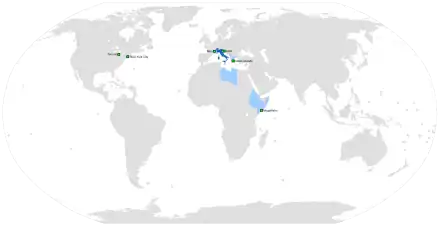
Yi-thai-li-ngî
Yi-thai-li-ngî (italiano) su̍k-yî Yin-Êu Ngî-ne ke Roman Ngî-chhu̍k. Hien-tshai yû thai-yok tshit-tshiên van ngìn ngit-sòng kóng Yi-thai-li-ngî, thai tô-su he Yi-thai-li kî-mìn. Ngi-sṳ̍p-kiú ke khì-thâ koet-kâ kî-mìn sṳ́-yung Yi-thai-li-ngî, khì-tsûng ńg-ke koet-kâ li̍p-hâ vi kôn-fông ngî-ngièn. Tsang-kûi Yi-thai-li-ngî he Toscana ke fông-ngièn, fat-yîm tshai-yî Yi-thai-li nàm-pan phu fông-ngièn tsṳ̂-kiên.[1] Yi-thai-li-ngî lâu Lâ-tên-ngî yit-yong, yû tshòng-phú-yîm. Khì-thâ Lâ-tên Ngî-tshu̍k ke Ngî-ngièn, yì Sî-pân-ngà-ngî khi̍p Fap-ngî yí-kîn mò tshòng-phú-yîm.
Li̍t-sṳ́
Lui-phe̍t
Thi-lî fûn-phu
Fông-ngièn
Ngî-yîm
Vùn-fap
Kî-pún Tshṳ̀-ki
Tsu-sṳt
Tshâm-siòng
參考資料
- Berloco, Fabrizio (2018). The Big Book of Italian Verbs: 900 Fully Conjugated Verbs in All Tenses. With IPA Transcription, 2nd Edition. Lengu. ISBN 978-8894034813.
- Palermo, Massimo (2015). Linguistica italiana. Il Mulino. ISBN 978-8815258847.
- Simone, Raffaele (2010). Enciclopedia dell'italiano. Treccani.
Ngoi-phu Lièn-kiet
Wikipedia
This article is issued from Wikipedia. The text is licensed under Creative Commons - Attribution - Sharealike. Additional terms may apply for the media files.